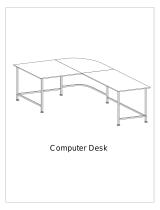
Installation
This appliance is top-heavy and
must be secured to prevent the
possibility of tipping forward.
Keep the door closed until the
appliance is completely installed
and secured per the installation
instructions.
~
This appliance must be installed
and connected in compliance with the
installation instructions.
~
Installation and repair work should
be performed by a Miele authorized
service technician. Work by unqualified
persons could be dangerous and may
void the warranty.
~
Installation must comply with local
regulations and state laws.
~
Do not operate any appliance with a
damaged cord or plug, or if the
appliance has been damaged in any
manner. Contact Miele’s Technical Ser-
vice Department.
~
This appliance must not be used in
a non-stationary location (e.g. on a
ship).
~
Do not install the refrigerator in a
room with too low an ambient
temperature, e.g., a garage, as this
may lead to the appliance switching off
for longer periods so that it cannot
maintain the required temperature.
Use
~
This appliance is not designed for
commercial use. It is intended for use in
domestic households and in similar
working and residential environments
such as:
–
shops, offices and similar work
environments
–
by customers in hotels, motels, Bed
& Breakfasts or similar residential
environments.
~
This appliance is not intended for
outdoor use.
~
Persons who lack physical, sensory
or mental abilities, or experience with
the machine should not use it without
supervision or instruction by a
responsible person.
~
To reduce the risk of injury, do not
allow children to play in, on or near the
appliance, especially in the door hinge
area.
~
After your refrigerator is in operation,
do not touch the cold surfaces in the
refrigerator compartment, particularly
when hands are damp or wet. Skin may
adhere to these extremely cold
surfaces.
~
Do not store or use gasoline or other
flammable vapors and liquids in the
vicinity of this or any other appliance.
~
Do not use any oils or grease on the
door seal, as these will cause the seal
to deteriorate and become porous with
time.
IMPORTANT SAFETY INSTRUCTIONS
5




















